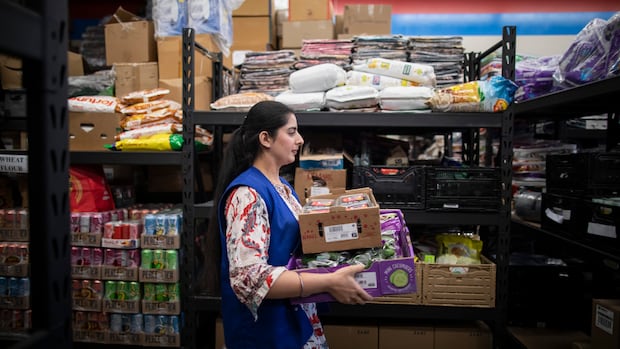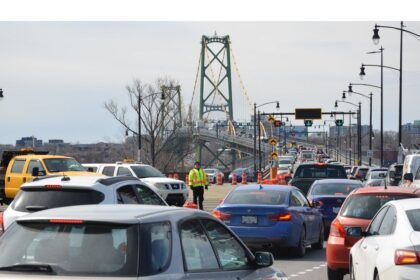British ColumbiaThe Food Banks Canada report found a growing number of people with paying jobs are using food banks in B.C.Just under a third of those needing food banks in the province were children, according to Food Banks CanadaAkshay Kulkarni · CBC News · Posted: Oct 28, 2025 12:16 AM EDT | Last Updated: October 28Listen to this articleEstimated 3 minutesVolunteers pack groceries for people in need at the Guru Nanak Food Bank in Delta, B.C., last April. A new report shows food bank usage has gone up dramatically in B.C. since 2019. (Ben Nelms/CBC)The number of visits to B.C. food banks has increased by nearly 80 per cent since the last pre-pandemic year of 2019, a new report from Food Banks Canada has found.According to the organization’s annual Hunger Count — which looked at food bank visits across Canada for the month of March and surveyed users there — there were over 223,000 visits to B.C. food banks that month.While B.C. was among only two provinces that saw visits dip year-over-year, food bank usage is up dramatically since 2019, before the pandemic saw inflation spike dramatically in Canada.Just under a third of people in B.C. needing food banks were children, according to the report.WATCH | Over 2 million visits to Canadian food banks in March:Canadian food banks recorded nearly 2.2M visits in a single month this year: reportA new report from Food Banks Canada says Canadian food banks recorded nearly 2.2 million visits in a single month this year, which is higher than the same period last year. The CBC’s Meagan Fitzpatrick breaks down the report, which cites rising unemployment and economic uncertainty as key drivers. “The other thing we see in B.C., and have for quite a number of years, is that it’s got the highest portion of seniors who need food banks,” said Kirstin Beardsley, the CEO of Food Banks Canada.”We don’t like to think of seniors having to use food banks — their fixed incomes at the end of all of their years should be enough for them to be able to pay for the essentials.”In the organization’s report, it found that a growing number of people with paying jobs were using food banks.”When we look at folks who are using food banks … the majority are market renters,” Beardsley said.”On average, they’re spending about 70 per cent of their income on rent alone.”Kirstin Beardsley from Food Banks Canada says that there needs to be more invested in programs like the Canada Disability Benefit to deal with food insecurity. (CBC)Anna Gray, the communications specialist for Vancouver charity Food Stash Foundation, said wages and disability assistance payments aren’t keeping up with housing and food prices.The charity helps save food from the landfill and send it to other charities, as well as give food directly to consumers at an in-person market event on Thursdays.”Our market program … has seen a 10 per cent increase in visitors in the last year,” Gray said.Gray said governments have to urgently implement long-term solutions and improve affordability.”Food banks, and programs like we have at Food Stash, just weren’t meant to be long-term solutions,” she said. “Like, we can be a Band-Aid solution.”Beardsley said groceries and eating healthy are two of the first things to fall by the wayside when people need to cut costs.”When a quarter of the population is food insecure, we’re not a strong country,” she said. “We can’t meet the challenges of the future.”Food bank usage was up among people with paying jobs, according to the report. (Ben Nelms/CBC)Beardsley said the federal government needs to modernize the employment insurance (EI) system to ensure that it recognizes precarious employment situations like gig work.”We need an EI system that’s modern, that speaks to the current labour force as we see it right now,” she said. “Because what happens is, if folks lose their jobs and there isn’t as a safety net to help them get back on their feet quickly, they fall into deep poverty.”A spokesperson for the B.C. Ministry of Social Development and Poverty Reduction said the province had invested $70 million since 2019 into organizations helping with food security initiatives.They said the ministry’s poverty reduction strategy released last year aims to reduce the overall poverty rate in B.C. by 60 per cent by 2034.With files from Michelle Morton
Food bank usage in B.C. has increased nearly 80% since 2019, report finds











